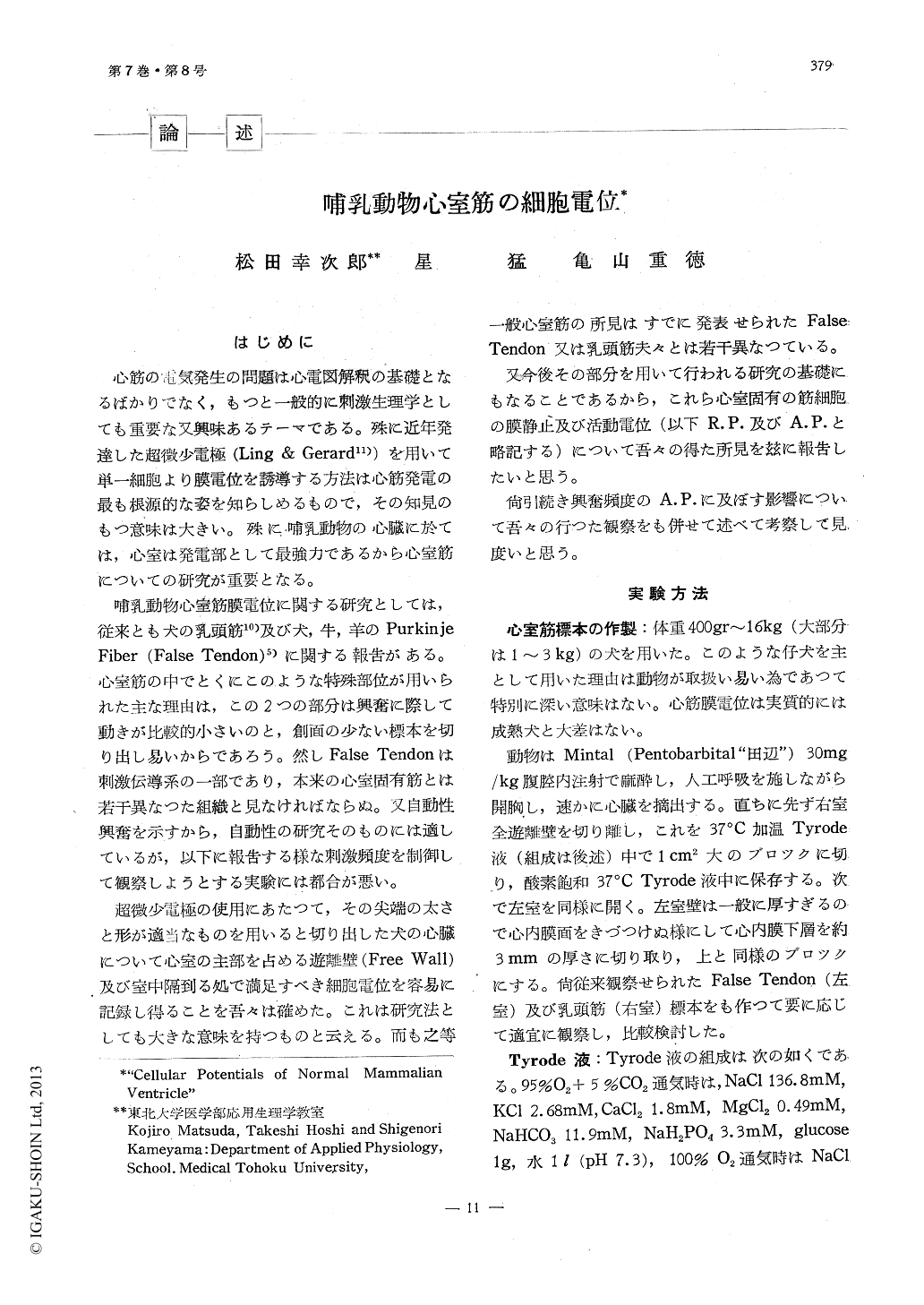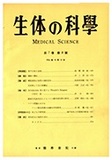Japanese
English
- 有料閲覧
- Abstract 文献概要
- 1ページ目 Look Inside
はじめに
心筋の電気発生の問題は心電図解釈の基礎となるばかりでなく,もつと一般的に刺激生理学としても重要な又興味あるテーマである。殊に近年発達した超微少電極(Ling & Gerard11))を用いて単一細胞より膜電位を誘導する方法は心筋発電の最も根源的な姿を知らしめるもので,その知見のもつ意味は大きい。殊に哺乳動物の心臓に於ては,心室は発電部として最強力であるから心室筋についての研究が重要となる。
哺乳動物心室筋膜電位に関する研究としては,従来とも犬の乳頭筋10)及び犬,牛,羊のPurkinjeFiber(False Tendon)5)に関する報告がある。心室筋の中でとくにこのような特殊部位が用いられた主な理由は,この2つの部分は興奮に際して動きが比較的小さいのと,創面の少ない標本を切り出し易いからであろう。然しFalse Tendonは刺激伝導系の一部であり,本来の心室固有筋とは若干異なつた組織と見なければならぬ。又自動性興奮を示すから,自動性の研究そのものには適しているが,以下に報告する様な刺激頻度を制御して観察しようとする実験には都合が悪い。
Hitherto the transmembrane potential of the excised ventricular muscle of the mammals was studied almost exclusively either at the false tendon (Purkinje fibre) or the papillary muscle because of the experimental conveniences. However, the impalement of the muscle fibers of free ventricular wall or the septum was found to be quite successfully carried out when the microelectrode having a tip appropriate in size and shape was used. The authors could thus record the resting and action potentials from the free ventricular wall of various mammals : dog, cat, goat, rabbit, guinea pig, rat, mouse.

Copyright © 1956, THE ICHIRO KANEHARA FOUNDATION. All rights reserved.


